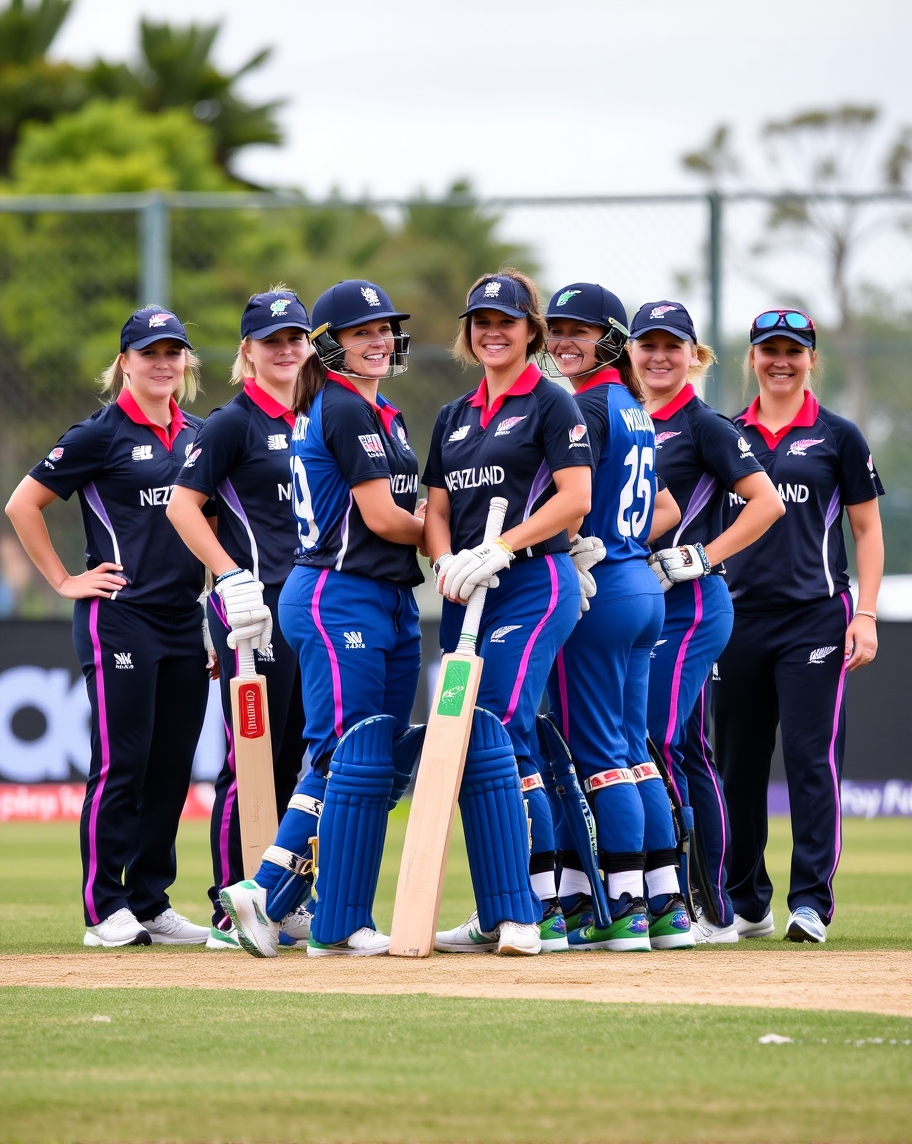The White Ferns, the women’s national cricket team of New Zealand, are an integral part of women’s international cricket. The team has contributed a lot since its formation and built a strong legacy on the field besides inspiring a new generation of female cricket players in New Zealand and across the globe. The White Ferns is a symbol of grit, teamwork, and the spirit of competition as the team has always showcased its talent in the international arena.
We discuss the history, successes, and key players of the New Zealand women’s national cricket team, which eventually led them to where they are today.
History of New Zealand Women’s National Cricket Team
New Zealand women’s national cricket team was formed in the early 1930s; they made their first international appearance against England in the year 1935. From that, New Zealand women celebrated their sparkling cricketing career. Even though women’s cricket had many inhibitions from insufficient budget to less coverage in the media, New Zealand women’s cricket teams kept progressing and hence forth focused on further triumphs.
The White Ferns were one of the earliest teams of women’s cricket and formed part of the very first teams that entered into international events. In fact, they first played a Test match way back in 1935, and by the time the structure came to women’s cricket, New Zealand already had established themselves as a good team.
Achievements of the White Ferns
The New Zealand women’s national cricket team performed for its country in most international tournaments, including the ICC Women’s World Cup, the ICC Women’s T20 World Cup, and the Women’s Cricket Series. In this time, the NZWN team received a good reputation for competing and being powerful enough to compete with the world’s top teams, including Australia and England.
ICC Women’s World Cup
One of the great performances from New Zealand women’s national cricket team was winning the 2000 ICC Women’s World Cup. The event was held in New Zealand, and the White Ferns became the champions by defeating Australia in a match that went down to the wire. This triumph marked a big step forward in the development of New Zealand women’s cricket over the years in putting the team firmly on the world map as one of the top female cricketing teams.
ICC Women’s T20 World Cup
The White Ferns also have been a consistent performer for the ICC Women’s T20 World Cup. Although they never won the title, they appeared consecutively in final matches; in the years 2009 and 2010, narrowly failing against England and Australia, respectively. The performances in the T20 format indicate it as a great adaptive strength, which demands the explosive batting, combined with great strategic bowling and sharp fielding.
Other International Series
The New Zealand women’s national cricket team played many bilateral and trilateral series, winning most of them. The women cricketing national side plays periodically against other cricketing countries such as Australia, England, India, and South Africa and has been quite prominent for their very competitive game and determination both in One-Day Internationals as well as T20s.
Key Players from New Zealand Women’s National Cricket Team
In the women’s cricket team of New Zealand, it has accommodated several legendary players who have played an important role in shaping the success of the team. Amongst the cricket histories of some players, they are phenomenal not only for New Zealand but indeed also for women’s cricket around the world.
1. Suzie Bates
Suzie Bates is one of the most iconic names in the world of women’s cricket. Former White Ferns captain, Suzie Bates, is known for her aggressive batting and leadership skills. She is placed at numerous records, including being the highest run-getter for New Zealand in both ODIs and T20s. Another is Suzie Bates, a great allrounder, who significantly bats and bowls; she is well considered among the best allrounders in women’s cricket history.
2. Sophie Devine
Another bright star on the New Zealand women’s national cricket team is Sophie Devine. She stands out in hands down for her explosive batting. She can change the game on her own with her aggressive play style, and she has made world records, with one record on scoring the fastest hundred by a woman in T20 International matches. Devine is also an effective bowler which completes her all-round attribute to become a valued player for the White Ferns.
3. Amy Satterthwaite
Amy Satterthwaite is another player, and people often refer to her as a one who has had the impression that never fades away with regard to New Zealand women’s cricket. She has been solidly consistent and reliable middle-order batter with Kiwis in ODIs as well as T20s, and her ability to play under pressure and anchor innings has gained her tremendous respect from team members and worldwide fans. She is also an accomplished bowler, which enhances her versatility as a cricketer.
4. Lea Tahuhu
Where bowling is concerned, one of the rawest yet most dreaded fast bowlers in women’s cricket need not be said-their names are a few but undoubtedly impressive, and among them stands Lea Tahuhu. With raw pace and pace generating bounce, she is a complete nightmare for the opposing batters. For long now, Lea Tahuhu has been an integral member of the New Zealand bowling attack in ODIs and T20 matches as well.
The Emergence of Young Blood
Recently, there has been great exciting talent bursting onto the New Zealand women’s national cricket team scene, with Amelia Kerr and Jess Kerr leading the charge. Some players, such as Amelia Kerr, have set international cricket records – for instance, scoring the highest individual score in women’s ODI cricket (232 not out). In raising such talent, these talented young players ensure that the White Ferns will remain a force to be reckoned with in the international arena in the years to come.
Challenges and the Road Ahead
Much success has been enjoyed at the hands of the White Ferns, but again, there has been ups and downs in form and strong competition from other top teams such as Australia and England. One more challenge that faced the team is a lack of consistent support and recognition towards women’s cricket in comparison with the game being played by their counterpart men. However, the situation has improved significantly over the past few years with much investment, media attention, and sponsorships for women’s cricket in New Zealand.
Therefore, the New Zealand women’s cricket team appears to be a bright prospect for the future. The mix of seasoned and new talent can help this cricketing team compete at the highest standard. Strong emphasis on women’s cricket at the international level and efforts towards complete gender equality in sport activities will bring equal consideration and encouragement to the White Ferns.
Conclusion
The most sought-after women’s cricket team around the globe, the New Zealand women’s national cricket team, is also regarded as a team to be feared. Right from its cute beginning to international success in most phenomenal ways, the White Ferns stand solid, skillful, and determined. And from Suzie Bates to Sophie Devine, Amy Satterthwaite, to the bright future of Amelia Kerr, the team has etched the inevitable name in the history of women’s cricket.
As they carry on with the team journey, the White Ferns not only fight for titles but also work as a pathway for girls to pursue female cricket in New Zealand. Indeed, this legacy will inspire generations down the line while this commitment to excellence ensures they do remain a dominant force for years to come in women’s cricket.













Your article helped me a lot, is there any more related content? Thanks!